Ugandan Food: Basic Overview
Common Ingredients
Common Cooking Methods
Courses
Meals
Key Taste
Eating Etiquette
Meal Presentation
Culinary Festivals
Influence and Fusion
Popular Types of Ugandan Food
-
Stews
Ugandan stews are hearty, using locally available meats or fish, or vegetarian options such as mushrooms and beans.
-
Boiled Dishes
Boiling is a prevalent method in Uganda for preparing both starchy sides and main dishes.
They emphasize the natural flavors of the ingredients with minimal use of spices.
-
Fried Dishes
They can be main dishes or snacks.
Plus, street food culture in Uganda prominently features fried dishes.
-
Condiments and Sauces
They are essential to adding depth to Ugandan meals, with groundnut sauce being particularly popular.
These condiments and sauces are often served alongside boiled or steamed dishes.
Ugandan dishes are customary and indigenous delicacies originating from Uganda, featuring a combination of traditional and modern cooking. Most often, Uganda’s cooking techniques and specialties receive influences from Arabs, Asia (particularly India), and English.
Many traditional Ugandan foods even have modern adaptations like Rolex and Luwombo. As for ingredients, traditional Ugandan foods use vegetables like potatoes, bananas, cassava, sweet potato, and fruits, with vegetables.
Aside from incorporating fruits into Ugandan foods, locals even enjoy them as snacks or desserts.
Before digging into famous dishes in this country, you can learn about its traditional food culture, its global attraction, and healthy aspects.
Furthermore, each Ugandan dish will be discussed with several interesting facts. You can also learn some tips to pair these delights with beverages.
Here are 20 popular dishes in Uganda to discover.
20 Popular Ugandan Dishes with Filters
These are the 20 most famous delights in Uganda. For more convenience, check out the filter options to quickly search your favorites.
Here are some overviews of the most popular, traditional, national, fusion, exotic, and street dishes.
Among the national dishes, posho is the most well-known national dish in Uganda. Other national delights are matoke and luwombo.
Street food in Uganda is a lively affair. The rolex is perhaps the most iconic street food item, but the streets are also filled with vendors selling grilled meats, maize, or cassava chips.
Fusion dishes that blend local flavors with international influences are becoming more common in the country.
Posho
- National
- Traditional
Posho is a beloved traditional Ugandan starchy dish with roots in 19th-century Kenya. Its history began in the 16th century when Europeans introduced corn to Africa.
The ingredients of posho consist of just cornmeal and water. While the color and ingredients resemble polenta, it has a plain flavor and porridge-like consistency. This dish is the ultimate side to an array of savory Ugandan dishes.
Another dish you will see around breakfast time in Uganda is Nyoi, which consists of boiled corn kernels, beans, and fried onions.
Posho is known by multiple African names, like Ugali, Kawunga, Busima, Ngima, Mutuku, and Pap.
Simsim Ball
- Street Food
- Traditional
Simsim balls are a snack in Uganda renowned for its blend of sesame seeds, a crop widely cultivated in northern and eastern Uganda. Locals combine sesame seeds with melted sugar for a texture and taste akin to peanut brittle.
The blend is then simmered to form bite-sized treats. Most often, these balls are sold at street food vendors and in supermarkets. Ugandans love enjoying them alongside a warm cup of tea or coffee.
Luwombo
- National
- Traditional
Luwombo (or oluwombo) is a Ugandan stew created by the Baganda people in the central part. It includes proteins (like goat, beef, chicken, fish, or mushrooms), vegetables, and peanuts (groundnuts).
To make Luwombo, locals prepare it in a package of banana leaves and slowly steam the stew to lock in every flavor and aroma. However, the modern adaptation of Luwombo is cooked in a steamer after wrapping the stew with banana leaves.
Luwombo comes in various versions, including chicken, beef, and fish, often combined with groundnuts or mushrooms. Locals normally enjoy it with mashed steamed plantains and sautéed greens.
Due to its complexity and cost, Luwombo is often enjoyed at restaurants or on special occasions.
Nsenene
- Exotic
- Street Food
- Traditional
Nsenene is a traditional specialty composed of bush crickets (Ruspolia differens) in Uganda, which look like grasshoppers. They are fried to crispy perfection in their own fat without any added oil.
Although Nsenene sounds unappealing, many African countries consider these fried crickets a street food delicacy. In Uganda, bush crickets are readily available during the wet seasons, especially in May and November.
Nsenene is a wonderful snack. It’s also suitable for sun-drying or boiling, but the allure of its popcorn-like crunch when deep-fried is a great delight.
Nswaa
- Exotic
- Street Food
- Traditional
Nswaa is another traditional and exquisite Ugandan snack featuring deep-fried termites as the primary ingredient. Like Nsenene, Nswaa is at its most abundant during the wet seasons. Plus, this insect dish is an excellent source of protein.
Nswaa often includes some spices to enrich its distinctive flavor. Street food vendors across Uganda and many other African countries cook up this popular snack, delighting passers-by with the inviting aroma of Nswaa sizzling away.
Rolex
- Street Food
- Traditional
Rolex is a traditional, affordable Ugandan street food that started in the eastern region of Busoga. Its name isn’t a throwback to the luxurious watch brand but rather a clever moniker for “rolled eggs.”
Each serving has a chapati wrap (made with all-purpose flour), an omelet, and a colorful medley of vegetables such as tomatoes, cabbage, onions, and bell peppers.
There are also different variations of Rolex, like the hearty Titanic uses multiple chapatis, while Kikomando opts for a chapati with fried beans but no omelet. Furthermore, modern variations of Rolex even introduce meat like chicken, beef, or pork.
Kabalagala
- Street Food
- Traditional
Kabalagala is a traditional street food in the form of banana pancakes in Uganda. Locals made them with ripe bananas, cassava flour, and hot peppers before deep-frying them.
Kabalagala is a tasty snack to serve alongside a cup of tea or a savory stew. It’s so well-liked in Kampala, Uganda’s capital, that a trendy neighborhood bears its name.
Mandazi
- Street Food
- Traditional
Mandazi is a traditional deep-fried bread in Uganda, from the Swahili Coast, and is popular throughout East Africa.
This deep-fried bread combines all-purpose flour, milk or coconut milk, eggs, vegetable oil, and spices. The result is an airy and crispy Mandazi.
Its delicious sweetness makes Mandazi a favored partner for hot drinks like coffee and tea, as well as savory Ugandan dishes, sauces, and dips.
Matoke
- National
- Traditional
Matoke is a national specialty of Uganda made of mashed plantains or bananas. Locals make Matoke by mixing the key ingredients with tomatoes, onions, garlic, and a blend of spices, such as cumin, black pepper, and coriander.
They wrap Matoke in banana leaves to steam or boil, creating a cheap and satisfying side that goes well with savory Ugandan dishes, sauces, and dips.
Interestingly, Matoke is also the name of a well-known plantain cultivar in East Africa, known as the East African Highland banana.
Katogo
- Street Food
- Traditional
Katogo is a traditional Ugandan stew hailing the Buganda region and Western Uganda. To create Katogo, locals simmer and stew green bananas (ideally Matooke) in a flavorful sauce with offal, onions, tomatoes, beans, and various spices.
Once a simple meal for poor people, Katogo is now found in many Ugandan restaurants. Its nutritious profile makes Katogo an excellent breakfast for many, especially with salads, cooked greens, or a glass of fruit juice.
While green bananas remain a key component for Katogo, there are many versions replacing them with cassava, sweet potatoes, or potatoes.
Malewa
- Traditional
Malewa is a traditional sauce created by the Gishu people in eastern Uganda. Its star ingredients are smoked bamboo shoots, peanut paste, water, and soda ash. The mixture is brought to a simmer and boiled until the flavors meld together.
Malewa is a flavor-enhancing condiment to dishes like sweet potatoes, cassava, rice, and Matooke. However, the term Malewa refers to both the smoked bamboo shoots and the sauce itself. These bamboo shoots are boiled or steamed to use as food.
Binyebwa
- Traditional
Binyebwa is a time-honored Ugandan sauce that blends the nutty flavors of roasted peanuts with water, onions, tomatoes, and vegetable oil. Locals often simmer Binyebwa gently until it becomes almost as thick as peanut butter.
Ideally, Binyebwa is great for pairing with dishes such as Matoke, Posho, cooked vegetables, and savory Ugandan delights.
Kikalayi
- Street Food
- Traditional
Kikalayi is a traditional specialty of fried pork from Uganda. To prepare Kikalayi as a main course, you need to fry pork until crispy and mix it with vegetables like potatoes, onions, tomatoes, and carrots.
Adding carefully selected spices brings a depth of flavor to every bite. Some recipes also omit the vegetables altogether, but that doesn’t stop Kikalayi from becoming a wonderful dish for any meal.
Chickennat
- Fusion
- Traditional
Chickennat is a traditional chicken stew from Uganda that combines poultry with onions, peanut butter, butter, egg yolks, and spices. All the ingredients are then simmered in chicken stock with a dash of spices.
Interestingly Chikennat has a touch of French cuisine, with butter and egg yolks enriching the stew’s texture and taste. Usually, Chickennat is a favorite main course especially at lunch.
Namungodi
- Street Food
- Traditional
Namungodi is the Ugandan deep-fried rice balls with a wholesome mix of rice, potatoes, water, flour, eggs, garlic, ginger, and chili flakes.
These crispy and savory Namungodi boast a strong appeal among school children. They’re a popular snack option and a nutritious breakfast item.
Muchomo
- Street Food
- Traditional
Muchomo is the traditional Ugandan version of marinated and roasted meat on skewers. They are a common street food in this country.
Muchomo consists of juicy meat cubes (beef, goat, pork, or chicken) that go through a meticulous marination process with aromatic Ugandan spices. Muchomo is usually served as a main course, accompanied by Matoke, Gonja (fried plantains), or salads.
Muchomo can be found at pork joints, a unique restaurant that sells raw pork, take-away pork dishes, and beverages. Back alleys in big cities are a good place to find these pork joints.
Eshabwe
- Traditional
Eshabwe (aka ghee sauce) is a traditional sauce of Uganda from Ankole, a region in the southwestern part of the country.
This sauce is inspired by Indian cuisine, but it is completely a Ugandan creation. Eshabwe also takes on a ceremonial role in special occasions, like weddings.
The condiment consists of ghee, salt, and water. Making Eshabwe requires stirring or blending ghee with water for a creamy consistency. Eshabwe is significant, especially in western Uganda, for enhancing starchy and savory dishes.
Kikomando
- Street Food
- Traditional
Kikomando is a street food in Uganda known for its affordable price tag. Commonly, people combine ingredients like chapati, fried beans, and often fried eggs. While seen as a variant of Rolex, Kikomando is very different from the original recipe.
Kikomando involves slicing or tearing chapati and combining it with the other ingredients. Its name was inspired by the 1985 movie “Commando,” starring Arnold Schwarzenegger. There is a local belief that eating Kikomando bestows the strength of Arnie!
Many students and laborers love Kikomando, both as a breakfast staple or a quick mid-day refuel. Some variations swap fried beans with avocados, cooked vegetables, stews, or gravy, adding another layer of complexity to this fast food from Uganda.
TV Chicken
- Street Food
- Traditional
TV chicken is a Ugandan version of rotisserie chicken. Its name comes from the television-like appearance of the rotisserie oven where the chicken is roasted.
This popular roasted chicken street food offers passersby a mouthwatering spectacle as the chicken turns and browns.
A serving of TV chicken often features cabbage, onion rings, and peppers. As a main course, TV chicken pairs well with French fries, Matoke, cooked cassava, or even salads.
Chaloko
- Traditional
Chaloko is a traditional bean soup or porridge of Uganda, a blend of pinto beans, tomatoes, onions, bell peppers, and warming spices. It is a must-try comfort food in the culinary repertoire of Uganda.
To enjoy Chaloko like a local, my advice is to serve the soup alongside Posho and sautéed greens for a balanced traditional Ugandan diet.
What Are The Main Features Of Ugandan Dishes?
Ugandan dishes boast 3 main features, including geography, ethnic groups, and cuisine influences.
Geography
As a landlocked country, Uganda relies on its numerous lakes for freshwater fish, steering clear of typical seafood.
The diverse terrains, including hills, mountains, and jungles, support a variety of vegetables and food crops.
Ethnic Groups
Distinct ethnic groups such as the Baganda, Nkole, and Basoga contribute their unique recipes, enriching Ugandan cuisine with diverse ways of preparing and enjoying African ingredients.
Foods native to one ethnic group often find nationwide acceptance and popularity.
Culinary Influences
The culinary landscape of Uganda reflects noticeable influences from English, Arab, and Asian (particularly Indian) cuisines, adding complexity and variety to the food culture.
What Beverages Can Pair With Dishes In Uganda?
Ready to complement your Ugandan food journey with the right drinks? Take a peek at some of these refreshing Ugandan beverages.
Overall, the drink options allow you to enjoy traditional Ugandan food fully while keeping you hydrated. Don’t miss out on these tasty food and drink combos.
If you feel intrigued by Uganda’s flavorful cuisine, why not share this journey with your friends and start a food discussion right away? And don’t forget to comment with your favorite Ugandan dish; I’d love to hear your culinary stories!



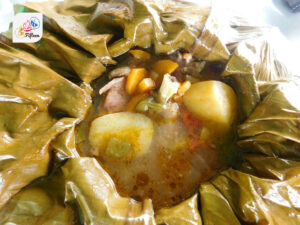
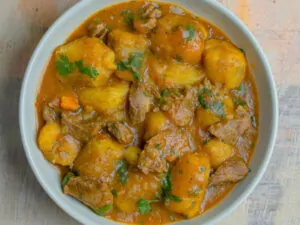
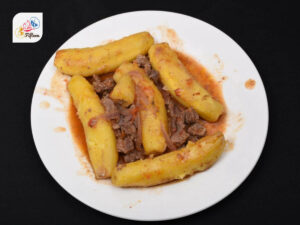
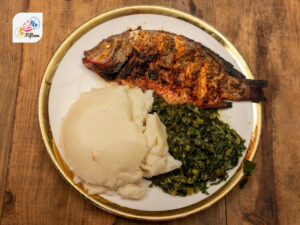

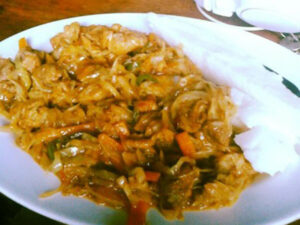


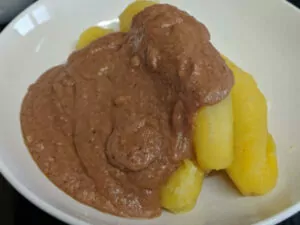



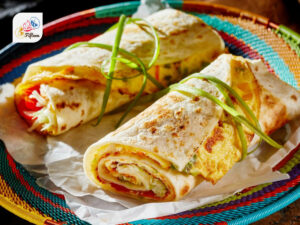


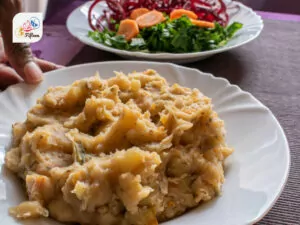
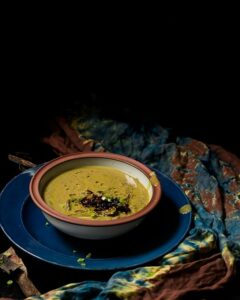
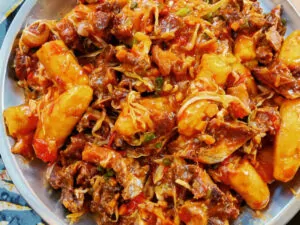
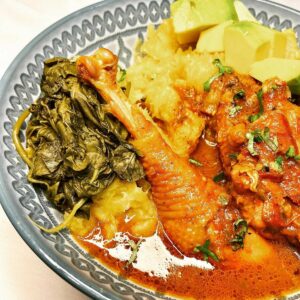
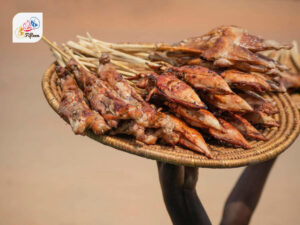
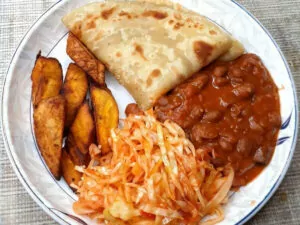
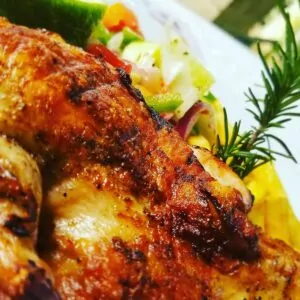
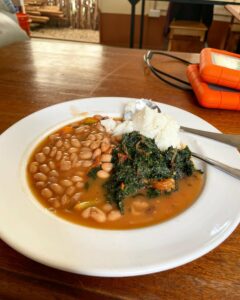
Jamie Scott
Editor in Chief, Senior Content Writer
Expertise
Home Cooking, Meal Planning, Recipe Development, Baking and Pastry, Food Editor, Cooking-video Maker, Western Food Evaluation Expert
Education
Le Cordon Bleu College of Culinary Arts
Local Community College, New York, NY
Jamie Scott is a skilled culinary expert and content creator specializing in Western cuisine. With over 15 years in the culinary field and formal training from Le Cordon Bleu, Paris, Jamie deeply understands how to blend nutrition with delicious flavors. His passion for cooking matches his commitment to making healthy eating accessible and enjoyable.
On Fifteen.net, Jamie brings a fresh perspective to classic dishes and beverages, offering readers insightful recipes, cooking tips, and a fresh view on meal planning that emphasizes taste, health, and simplicity.